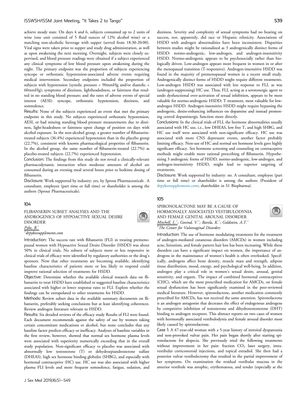Flibanserin Subset Analyses and the Androgenics of Hypoactive Sexual Desire Disorder
May 2019
in “
The Journal of Sexual Medicine
”

TLDR Flibanserin's effectiveness for low sexual desire in premenopausal women may vary based on hormone levels, with normal hormone levels showing better responses.
The document discusses the efficacy of flibanserin (FLI) in treating premenopausal women with Hypoactive Sexual Desire Disorder (HSDD) and explores whether certain baseline characteristics can predict a patient's response to the treatment. The study reviewed six detailed documents on FLI efficacy and found that while no baseline factor conclusively predicted efficacy or inefficacy, there were some associations. Normal sex hormone levels were linked to a numerically superior response compared to the overall study population, while low testosterone (T) or dehydroepiandrosterone sulfate (DHEAS), high sex hormone binding globulin (SHBG), and hormonal contraceptive (HC) use were associated with non-significant efficacy versus placebo. HC use also correlated with higher plasma FLI levels and more frequent central nervous system (CNS) depressant events. The study hypothesizes three androgenically distinct forms of HSDD—normo-androgenic, low-androgen, and androgen-insensitivity—and suggests that different forms may require different treatments. FLI appears most effective for normo-androgenic HSDD, while T treatment may be more valuable for low-androgen HSDD. The study concludes that sex hormone screening and counseling on contraceptive methods could enable more rational prescribing of flibanserin. The work was not supported by industry, and a consultant, employee, or shareholder is among the authors.
